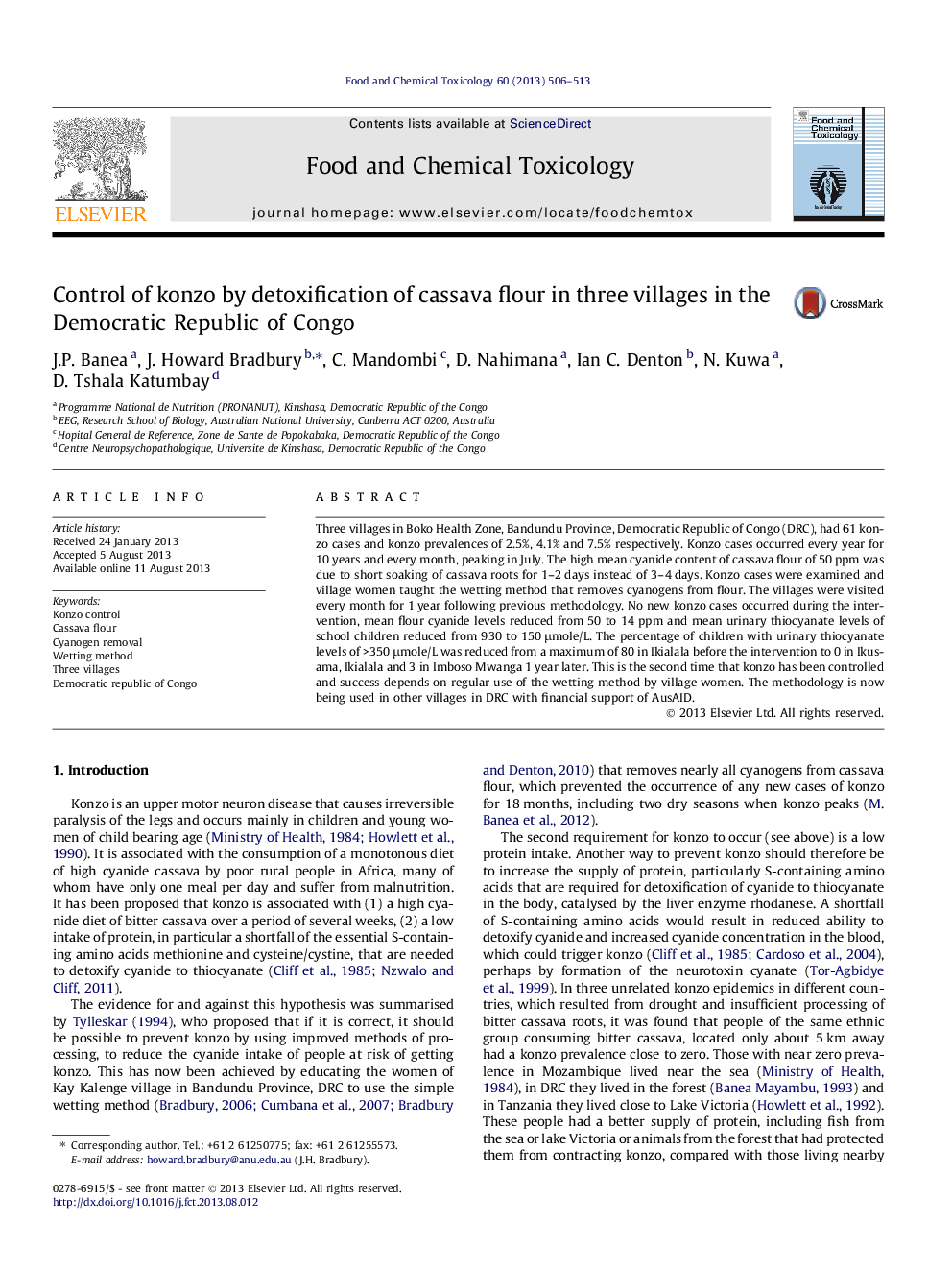| Article ID | Journal | Published Year | Pages | File Type |
|---|---|---|---|---|
| 2585138 | Food and Chemical Toxicology | 2013 | 8 Pages |
•Three villages in DRC had 61 konzo cases that occurred every year for 10 years and in every month of the year.•The high cyanide content of cassava flour was due to short soaking of cassava roots for only 1–2 days instead of 4 days.•The women were taught and used the wetting method that removes cyanogens from cassava flour.•Over the 1 year trial there were no new konzo cases and amounts of flour cyanide and urinary thiocyanate fell to safe levels.•Konzo has been controlled for the second time and the protocol is being used in other villages in DRC with support of AusAID.
Three villages in Boko Health Zone, Bandundu Province, Democratic Republic of Congo (DRC), had 61 konzo cases and konzo prevalences of 2.5%, 4.1% and 7.5% respectively. Konzo cases occurred every year for 10 years and every month, peaking in July. The high mean cyanide content of cassava flour of 50 ppm was due to short soaking of cassava roots for 1–2 days instead of 3–4 days. Konzo cases were examined and village women taught the wetting method that removes cyanogens from flour. The villages were visited every month for 1 year following previous methodology. No new konzo cases occurred during the intervention, mean flour cyanide levels reduced from 50 to 14 ppm and mean urinary thiocyanate levels of school children reduced from 930 to 150 μmole/L. The percentage of children with urinary thiocyanate levels of >350 μmole/L was reduced from a maximum of 80 in Ikialala before the intervention to 0 in Ikusama, Ikialala and 3 in Imboso Mwanga 1 year later. This is the second time that konzo has been controlled and success depends on regular use of the wetting method by village women. The methodology is now being used in other villages in DRC with financial support of AusAID.
